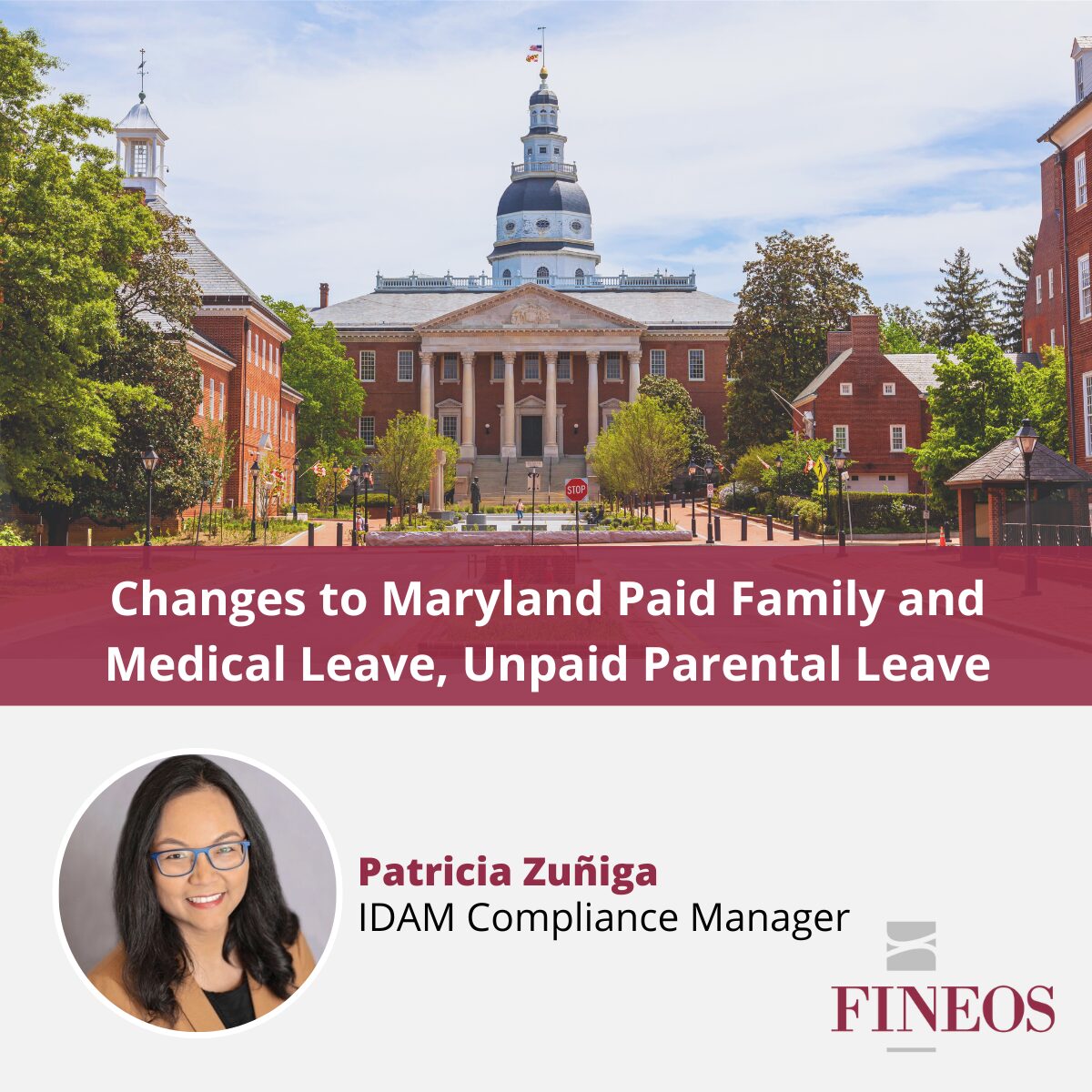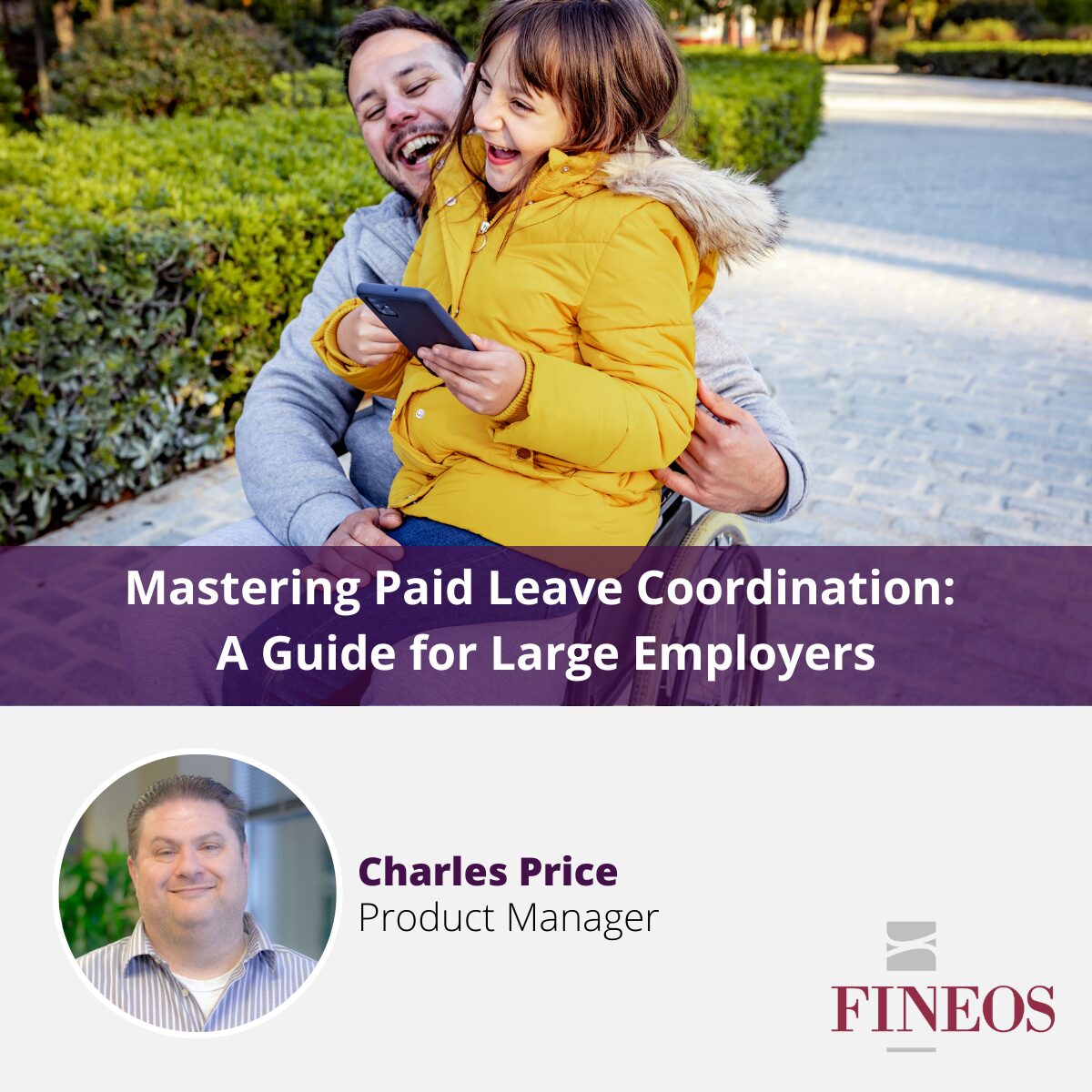Insurance carriers need agile absence management software to adapt in real-time when new leave legislation goes into effect. In this blog, you’ll learn about the latest updates to leave laws in Minnesota and how FINEOS is helping carriers remain in compliance.
The 2024 Minnesota House tax bill (H.F. 5247) signed into law by Gov. Tim Walz contained significant changes to Minnesota leave laws affecting employers and employees. Here’s what you need to know:
Minnesota Earned Sick and Safe Time
What: Minnesota’s earned sick and safe time (ESST) law went into effect January 1, 2024. The 2024 amendment makes changes to the ESST to clarify and expand it in several ways, as detailed below.
When: Effective immediately
Eligible employees. Per existing law, Minnesota employees, including temporary and part-time employees, are eligible for earned sick and safe time (ESST) if they work at least 80 hours per year for their employer. The amendment clarifies that this includes employees who are anticipated to satisfy the hours worked requirement. The amendment also clarifies that the following categories of workers are not covered: volunteer firefighters or paid on-call firefighters, volunteer ambulance attendants, paid on-call ambulance service personnel, elected officials, or an individual employed by a farmer, family farm, or a family farm corporation to provide physical labor on or management of a farm if the farmer, family farm, or family farm corporation employs the individual to perform work for 28 days or less each year.
Covered leave reasons. The existing ESST law allows an employee to take leave from work for medical, family care, safe leave, business/school closure, and public emergency leave reasons. The amendment adds a new bereavement leave reason, when the employee needs to make arrangements for or attend funeral services or a memorial, or address financial or legal matters that arise after the death of a family member.
Definition of base rate. Existing law provided that employees must be paid their hourly rate. The amendment provides that employees must be paid at the same base rate as an employee earns from employment. “Base rate” means the following:
- For employees paid on an hourly basis, the same rate received per hour of work; 2.
- For employees paid on an hourly basis who receive multiple hourly rates, the rate the employee would have been paid for the period of time in which leave was taken; 3.
- For employees paid on a salary basis, the same rate guaranteed to the employee as if the employee had not taken the leave; and 4.
- For employees paid solely on a commission, piecework, or any basis other than hourly or salary, a rate no less than the applicable local, state, or federal minimum wage, whichever is greater.
The base rate does not include commissions, shift differentials that are in addition to an hourly rate, premium payments for overtime work, premium payments for work on Saturdays, Sundays, holidays, or scheduled days off, bonuses, or gratuities.
Increments. The amendment clarifies that ESST may be used same increment of time for which employees are paid, but provides that an employer is not required to provide leave in less than 15-minute increments, nor can the employer require use of earned sick and safe time in more than four-hour increments.
Documentation. The amendment clarifies that reasonable documentation for safe leave purposes may include a written statement from the employee indicating that the employee is using or ESST for safe leave reasons, if documentation cannot be obtained in a reasonable time or without added expense.
Notice to employees. Existing law required employers to provide an earnings statement with certain information, in electronic form or in writing. The amendment clarified that the employer must provide, in writing or electronically, information stating the total number of available ESST hours available and the total number of used ESST hours during the pay period. Employers may choose a reasonable system for providing this information, including but not limited to listing information on or attached to each earnings statement or an electronic system where employees can access this information. An employer who chooses to provide this information by electronic means must provide employee access to an employer-owned computer during an employee’s regular working hours to review and print.
Remedies. The amendment strengthens an employee’s remedies for an employer’s noncompliance with the law. If an employer does not provide or does not allow the use of ESST, the employer is liable to all employees who were not provided or not allowed to use ESST for an amount equal to all ESST that should have been provided or could have been used, plus liquidated damages. If the employer does not have records sufficient to determine the ESST an employee should have been provided, the employer is liable to the employee for an amount equal to 48 hours of earned sick and safe time for each year ESST was not provided, plus liquidated damages.
Minnesota Paid Family and Medical Leave
The amendments do not postpone the original paid family and medical leave (PFML) program effective date – contributions to the program will still begin on January 1, 2026, and employees may begin receiving benefits on the same day. Most provisions of the PFML law remain unchanged. However, key changes include:
Coverage for former employees. For former employees, coverage for the purposes of benefits applies until the individual is hired by a new employer or 26 weeks pass, whichever occurs first. If an application for leave is filed by a former employee to a private plan, the private plan is required to pay benefits for the totality of the leave. Private plans must not discontinue eligibility for a former employee during the course of an approved leave.
Plan Changes During Approved Leave: If an employee is on leave covered by MN PFML when their employer changes from the state plan to a private plan, from a private plan to the state plan, or from one private plan to another private plan, the plan that covered the employee when their benefits were approved must continue paying benefits for continuous, intermittent, and reduced schedule leave through the duration previously approved. If the employee requests an extension of their original leave, or recertification is required, the employee should reapply for benefits with their new plan.
Premium rate adjustments. The annual premium rate may be adjusted prior to January 1, 2026; previously, the change could only be made beginning January 1, 2027. The annual premium rate for the following calendar year will be adjusted by July 31, 2026 , and then by July 31 of each year thereafter. An independent actuarial consultant will be engaged to conduct an actuarial study for premium rate adjustments every year. The maximum annual premium rate specified by law is unchanged, i.e., 1.2% of taxable wages paid to each employee.
Small employer premium rate. Generally, employers and employees are each responsible for 50% of the annual premiums unless the employer chooses to cover the entire amount. However, the amendment provides a reduced premium rate for small employers. Small employers are responsible for 75% of the annual premium rate, with the employer responsible for a minimum of 25% percent of that amount, and employees responsible for the remaining portion due, if any, of the premium not paid by the employer. Small employers cannot deduct from any employees’ pay to fund the employer portion of the premium, but they can make wage deductions as necessary to fund the employee portion of the premium. An employer is considered a small employer if they have 30 or fewer employees, and the average wage for that employer is less than or equal to 150% of the state’s average wage in covered employment for the basis period.
Initial paid week. While most PFML programs do not require a waiting period, the states that do enforce such a provision have an unpaid waiting period before payments begin. The Minnesota PFML law has an unconventional waiting and qualifying event period, as follows:
- An employee must be seeking benefits for a period based on a single event of at least seven calendar days’ duration related to medical care related to pregnancy, family care, a qualifying exigency, safety leave, or the applicant’s serious health condition. This seven-day period must be consecutive, unless the requested leave is intermittent. The employee need not require seven calendar days of leave, but the event itself must satisfy that duration.
- The initial seven calendar day period begins on the first day of leave and may or may not consists of seven days of leave, depending on the nature of the leave employee’s schedule. The amendment makes it clear that a seven-day qualifying event is retroactively payable, not an unpaid waiting period.
Intermittent leave. Intermittent leave must be taken in increments consistent with the established policy of the employer to account for use of other forms of leave, as long as such employer’s policy permits a minimum increment of at most one calendar day of intermittent leave. An employee cannot apply for payment for benefits associated with intermittent leave until the applicant has eight hours of accumulated leave time, unless more than 30 calendar days have lapsed since the initial taking of the leave.
Employer reimbursement. An employer can opt to provide an employee with wage replacement during an absence. If the total amount of PFML benefits and the supplemental benefits paid exceed the employee’s usual salary, the employee must refund the excess to either the employer or the state. If an employer provides wage replacement to an employee for weeks that should be paid by the state, the state may reimburse the employer directly for those weeks.
Disability insurance offset. An employee can receive disability insurance payments in addition to PFML benefits if the employee is concurrently eligible for both benefits. Disability insurance benefits can be offset by PFML benefits paid to the employee according to the terms of a disability insurance policy.
Reporting. Employers covered under a private plan will still be subject to the quarterly wage reporting requirements.
FINEOS can help with your state leave programs
FINEOS will be ready to administer these new and amended state leave programs. Using modern insurance technology solutions like the FINEOS Platform can help insurance carriers remain compliant and competitive when leave legislation is revised and new products are authorized by governing jurisdictions. Learn more about how a modern, integrated disability and absence management (IDAM) solution can help your organization adapt to this rapidly evolving market and remain in compliance.


